Speaker Biographies
CDR Bobby Barakat
CDR Bobby Barakat is a native of Great Falls, Virginia. He earned his commission through the Navy OCS program after graduating from George Mason University with a Bachelor of Science in Decision Sciences/Management Information Systems (DMIS) in 1996. He recently deployed as an Individual Augmentee to the Combined Joint Task Force – Horn of Africa (CJTF-HOA) at Camp Lemonier, Djibouti as a Contingency Contracting Officer supporting the Global War on Terror operations and humanitarian missions.In addition to various unit and service awards, Lieutenant Commander Barakat has been awarded the Defense Meritorious Service Medal, Meritorious Service Medal, Joint Commendation Medal, Navy Commendation Medal (three awards) and the Navy Achievement Medal. He is a qualified Naval Aviation Supply Officer, Surface Warfare Supply Corps Officer, a Certified Defense Financial Manager, and member of the Navy Acquisition Professional Community.
Colonel Harvey “Barney†Barnum
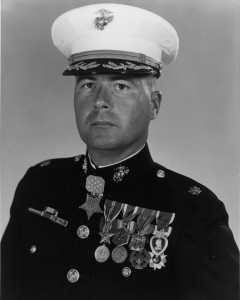 Colonel Harvey “Barney†Barnum was commissioned a second lieutenant in the Marine Corps in 1962. As a Marine officer for over 27 years, Barnum served multiple tours as an artilleryman with the 3rd and 2nd Marine Divisions, including two tours in Vietnam. Barnum earned the Medal of Honor on December 18, 1965 in Vietnam. His other decorations include the Defense Superior Service Medal, Legion of Merit, Bronze Star, Purple Heart, Meritorious Service Medal, Navy Commendation Medal, Navy Achievement Medal with Combat V, and Presidential Unit Citation.
Colonel Harvey “Barney†Barnum was commissioned a second lieutenant in the Marine Corps in 1962. As a Marine officer for over 27 years, Barnum served multiple tours as an artilleryman with the 3rd and 2nd Marine Divisions, including two tours in Vietnam. Barnum earned the Medal of Honor on December 18, 1965 in Vietnam. His other decorations include the Defense Superior Service Medal, Legion of Merit, Bronze Star, Purple Heart, Meritorious Service Medal, Navy Commendation Medal, Navy Achievement Medal with Combat V, and Presidential Unit Citation.
David Bellavia
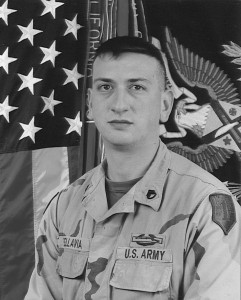 David Bellavia is a former army staff sergeant who served in the First Infantry Division (Task Force 2-2). He has been nominated for the Medal of Honor for actions he took in a fierce urban firefight in the Battle of Fallujah. He has received the Silver Star, the Bronze Star, and the Conspicuous Service Cross. He has also been nominated for the Distinguished Service Cross. He chronicled this fight in the critically acclaimed book “House to House: An Epic Memoir of War” (2007, Free Press). David co-founded Vets for Freedom and recently founded the Warrior Legacy Foundation, a charity designed to restore the dignity of service. He has co-written a screenplay on the war that is in pre-production, and he has returned to Iraq numerous times as a reporter.
David Bellavia is a former army staff sergeant who served in the First Infantry Division (Task Force 2-2). He has been nominated for the Medal of Honor for actions he took in a fierce urban firefight in the Battle of Fallujah. He has received the Silver Star, the Bronze Star, and the Conspicuous Service Cross. He has also been nominated for the Distinguished Service Cross. He chronicled this fight in the critically acclaimed book “House to House: An Epic Memoir of War” (2007, Free Press). David co-founded Vets for Freedom and recently founded the Warrior Legacy Foundation, a charity designed to restore the dignity of service. He has co-written a screenplay on the war that is in pre-production, and he has returned to Iraq numerous times as a reporter.
Yogi Berra
Yogi Berra is a Hall of Fame baseball player, a 15-time All-Star, 10-time World Series winner, and three-time Most Valuable Player in the American League (1951, 1954, and 1955). He played with the New York Yankees from 1946-63, and was the catcher behind the plate at Don Larsen’s perfect game in the 1956 World Series. Before his baseball career, Berra served in the U.S. Navy during World War II, and manned a rocket launcher during the battle of Normandy.
Lou Brissie
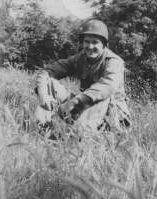 Lou Brissie signed with the Philadelphia Athletics in 1941 at age 17. He volunteered for military service in 1942 and served with the 88th Division in Italy. On December 7, 1944, he was hit by artillery fire, shattering his left shinbone in more than 30 pieces, breaking his left ankle and right foot. He convinced doctors not to amputate his leg. The surgeon who saved Brissie’s leg was awarded a Surgeon General’s Special Commendation for his work. Brissie returned home with an intense desire to return to Major League Baseball. Twenty three operations, three years, and countless hours of rehabilitation later, he made his debut with Philadelphia Athletics. He spent 7 years pitching in the major leagues.
Lou Brissie signed with the Philadelphia Athletics in 1941 at age 17. He volunteered for military service in 1942 and served with the 88th Division in Italy. On December 7, 1944, he was hit by artillery fire, shattering his left shinbone in more than 30 pieces, breaking his left ankle and right foot. He convinced doctors not to amputate his leg. The surgeon who saved Brissie’s leg was awarded a Surgeon General’s Special Commendation for his work. Brissie returned home with an intense desire to return to Major League Baseball. Twenty three operations, three years, and countless hours of rehabilitation later, he made his debut with Philadelphia Athletics. He spent 7 years pitching in the major leagues.
Schooled in Melbourne, Australia, by the veterans who had just returned from combat in Guadalcanal, Company K confronted snipers, ambushes along narrow jungle trails, abandoned corpses of hara-kiri victims, and howling banzai attacks as they island-hopped from one bloody battle to the next. During his two years of service, Burgin rose from a green private to a seasoned sergeant, and earned a Bronze Star for his valor at Okinawa. He is featured in the HBO series The Pacific.
Dr. Roscoe C. Brown, Jr.
Dr. Roscoe C. Brown, Jr., a former Army Air Force Captain, commanded the 100th Fighter Squadron of the 332nd Fighter Group (the “Tuskegee Airmen”) in World War II, and was awarded the Distinguished Flying Cross and Air Medal with eight Oak Leaf Clusters. He is credited with being the first 15th Air Force fighter pilot to shoot down a German jet fighter, and has been honored by the Intrepid Air-Space Museum in New York City for his outstanding leadership as Squadron Commander. He is currently the Director of the Center for Urban Education Policy and University Professor at the Graduate School and University Center of The City University of New York. He holds numerous scholarly honors and has served on the boards of a variety of charitable and educational foundations. Active in the arts and media, Dr. Brown has hosted numerous television programs, including the Emmy Award-winning “Black Arts” (WCBS-TV).
Lieutenant Colonel Richard E. Cole
Lieutenant Colonel Richard E. Cole was born in Dayton and completed two years at Ohio University before enlisting as a Flying Cadet in November 1940. He completed training in July 1941 and was the co-pilot for Lt. Col. James H. Doolittle on the first plane off the carrier Hornet. He remained in the CBI until June 1943, flying cargo from India to China. He returned to the CBI in October 1943 and flew with the AAF’s famed 1st Air Commandos in support of Allied operations behind Japanese lines. He had several operational assignments, including operations advisor to the Venezuelan Air Force, before retiring to Texas in 1967.
Lt. Colonel Jerry Coleman
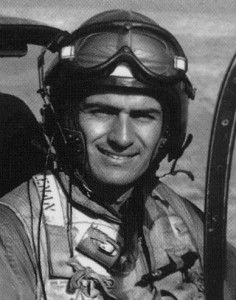 Lieutenant Colonel Jerry Coleman joined the Marine Corps on October 23, 1942. He flew 57 combat missions in the Pacific during World War II. In January 1946, he was put on the inactive reserve list and resumed his baseball career, playing second base for the Yankees. During the Korean War, Coleman was called to active duty and flew another 63 combat missions. In August 1953, he returned to second base for the Yankees. He joined the Marine Corps Reserve, where he did promotional work for the Marines until he retired in 1964. He is the only major league player to see combat in two wars. Coleman was awarded two Distinguished Flying Crosses, 13 Air Medals and three Navy Citations.
Lieutenant Colonel Jerry Coleman joined the Marine Corps on October 23, 1942. He flew 57 combat missions in the Pacific during World War II. In January 1946, he was put on the inactive reserve list and resumed his baseball career, playing second base for the Yankees. During the Korean War, Coleman was called to active duty and flew another 63 combat missions. In August 1953, he returned to second base for the Yankees. He joined the Marine Corps Reserve, where he did promotional work for the Marines until he retired in 1964. He is the only major league player to see combat in two wars. Coleman was awarded two Distinguished Flying Crosses, 13 Air Medals and three Navy Citations.
H. Newcomb “Newc” Eldredge
H. Newcomb “Newc” Eldredge was born on August 4, 1924 in Baltimore Maryland. Eldredge enlisted in the Army on November 12, 1943 at Rochester, New York. He joined the 10th Mountain Division at Camp Hale, Colorado in mid-1944, where he was assigned to Company L of the 85th Infantry Regiment. Eldredge later served at Camp Swift, Texas and in Italy. During combat operations in Italy, he was severely wounded near Castel d’Aiano on April 14, 1945. He was awarded two Bronze Star medals. Eldredge was discharged from the service on March 14, 1946. With the outbreak of the Korean War, Eldredge returned to the Army and received a 2nd Lieutenant’s commission. He served initially as an intelligence officer and later as an infantry platoon leader while stationed in Colorado. Eldredge married Sally McCrillis on August 31, 1950, at Lake Sunapee, New Hampshire. Newcomb and Sally Eldredge have two sons a daughter and five grandchildren.
Bob Feller
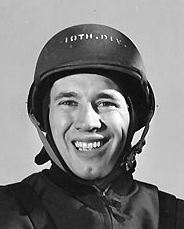 Bob Feller was a star pitcher for the Cleveland Indians during the late 1930s and early 1940s. Following the Japanese bombing of Pearl Harbor on December 7, 1941, Feller immediately enlisted in the United States Navy, where he was assigned to command a 24-man gunnery squad on the battleship Alabama. After a year of service in the North Atlantic, Feller and the Alabama were sent to the Pacific, where he participated in eight invasions including Iwo Jima. Feller was discharged in August 1945, after almost four years of service. He returned to baseball and resumed a career that led to his induction into the MLB Hall of Fame.
Bob Feller was a star pitcher for the Cleveland Indians during the late 1930s and early 1940s. Following the Japanese bombing of Pearl Harbor on December 7, 1941, Feller immediately enlisted in the United States Navy, where he was assigned to command a 24-man gunnery squad on the battleship Alabama. After a year of service in the North Atlantic, Feller and the Alabama were sent to the Pacific, where he participated in eight invasions including Iwo Jima. Feller was discharged in August 1945, after almost four years of service. He returned to baseball and resumed a career that led to his induction into the MLB Hall of Fame.
Colonel Carroll V. Glines
Colonel Carroll V. Glines, historian for the Doolittle Raiders, entered flight training in May 1941 and graduated in January 1942. He was a flight instructor during WWII followed by tours in Panama and Europe. He received MBA and MA degrees while on active duty and served on the Air University staff before a seven-year tour in the offices of the Secretary of the Air Force and Assistant Secretary of Defense. His final assignment was as Chief, Public Affairs for the Alaskan Command. After retirement in 1968, he was an aviation magazine editor and authored 36 books, including three books on the Tokyo Raid.
Major Thomas C. Griffin
Major Thomas C. Griffin was born in Green Bay, Wisconsin. He graduated from the University of Alabama in 1939 and entered service as a second lieutenant in the Coast Artillery but requested relief from active duty to enlist as a flying cadet. He was rated as a navigator and was re-commissioned on July 1, 1940. He was a navigator on Crew No. 9 of the Doolittle Raiders and later served in North Africa. His plane was shot down, and he was captured by the Germans in July 1943. After release in April 1945, he returned to civilian life and established his own accounting firm in Cincinnati.
Elaine Danforth Harmon
Elaine Danforth Harmon was born in Baltimore, Maryland, in 1919, the second of three girls. Â Harmon joined the Civilian Pilot Training Program at the College Park Airport while she was student at the University of Maryland where she learned how to fly. Â Harmon joined the WASP (Women Airforce Service Pilots) in March 1944 while her husband was sent to the South Pacific. She attended WASP training at Avenger Field in Sweetwater, Texas, and graduated on November 11, 1944. Until the WASP disbanded on December 20 1944, Harmon was stationed at Nellis Air Force Base in Las Vegas, Nevada, where she helped male pilots with their instrument flying. Â Harmon returned to Baltimore in late 1944 and then went to California to work as an air traffic controller. Â The Harmons settled in Silver Springs,Maryland,andraisedfourchildren.
CDR Mark Harris
CDR Mark Harris is a Honolulu, Hawaii native who graduated from University of Hawaii with B.S in Chemistry. He was commissioned, Officer Candidate School (OCS), as an Ensign in the Supply Corps in 1997 and has served in a variety of assignments at sea, ashore, and overseas. In June 2010, he completed a 12 month Individual Augmentation (IA) assignment to the Head Quarter United States Forces-Afghanistan (HQUSFOR-A) as the J4 Current Operations Officer and later USFOR-A Detachment-West Chief Logistics Officer/Deputy Commander, in support of Operation Enduring Freedom.
Edward “Babe” Heffron
 Edward “Babe†Heffron was born in 1923. He joined Easy Company, 506th Parachute Infantry Regiment, 101st Airborne Division while the division was resting in England after the Normandy Invasion. He participated in Operation Market Garden and the Battle of the Bulge. Heffron served as a consultant for the HBO production Band of Brothers.
Edward “Babe†Heffron was born in 1923. He joined Easy Company, 506th Parachute Infantry Regiment, 101st Airborne Division while the division was resting in England after the Normandy Invasion. He participated in Operation Market Garden and the Battle of the Bulge. Heffron served as a consultant for the HBO production Band of Brothers.
Captain Thomas J. Hudner, Jr.
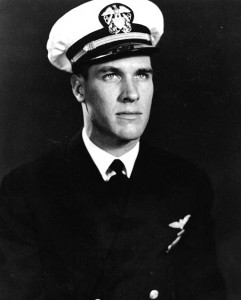 Captain Thomas J. Hudner, Jr. graduated from the Naval Academy in 1946. After attending flight school, he was designated a Naval Aviator in August of 1949. On December 4, 1950, while serving with VF-32 during the Korean War, he crash-landed his own plane near the Chosin Reservoir in an effort to rescue Ensign Jesse L. Brown, another pilot whose plane had been shot down. For his heroism on that occasion, then-Lt. (Junior Grade) Hudner was awarded the Medal of Honor―the first Navy Medal of Honor to be awarded during the Korean War.
Captain Thomas J. Hudner, Jr. graduated from the Naval Academy in 1946. After attending flight school, he was designated a Naval Aviator in August of 1949. On December 4, 1950, while serving with VF-32 during the Korean War, he crash-landed his own plane near the Chosin Reservoir in an effort to rescue Ensign Jesse L. Brown, another pilot whose plane had been shot down. For his heroism on that occasion, then-Lt. (Junior Grade) Hudner was awarded the Medal of Honor―the first Navy Medal of Honor to be awarded during the Korean War.
Colonel Jack Jacobs
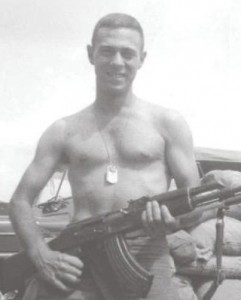 Colonel Jack Jacobs, who entered military service through Rutgers ROTC, earned the Medal of Honor for exceptional heroism on the battlefields of Vietnam. He also holds three Bronze Stars and two Silver Stars. Jacobs was an adviser to a Vietnamese infantry battalion when it came under a devastating fire that disabled the commander. Although bleeding from severe head wounds, then-First Lieutenant Jacobs took command, withdrew the unit to safety, and returned again and again under intense fire to rescue the wounded and perform life-saving first aid. He saved the lives of a U.S. adviser and 13 allied soldiers. Jacobs served on the faculty of the U.S. Military Academy at West Point and the National War College in Washington, D.C. After retirement, he founded and was chief operating officer of Auto Finance Group. As a managing director of Bankers Trust Co., he led Global Investment Management to $2.2 billion in assets and later co-founded a similar business for Lehman Brothers. He is a member of the Council on Foreign Relations and is a director of the Medal of Honor Foundation. He is also a military analyst for NBC/MSNBC.
Colonel Jack Jacobs, who entered military service through Rutgers ROTC, earned the Medal of Honor for exceptional heroism on the battlefields of Vietnam. He also holds three Bronze Stars and two Silver Stars. Jacobs was an adviser to a Vietnamese infantry battalion when it came under a devastating fire that disabled the commander. Although bleeding from severe head wounds, then-First Lieutenant Jacobs took command, withdrew the unit to safety, and returned again and again under intense fire to rescue the wounded and perform life-saving first aid. He saved the lives of a U.S. adviser and 13 allied soldiers. Jacobs served on the faculty of the U.S. Military Academy at West Point and the National War College in Washington, D.C. After retirement, he founded and was chief operating officer of Auto Finance Group. As a managing director of Bankers Trust Co., he led Global Investment Management to $2.2 billion in assets and later co-founded a similar business for Lehman Brothers. He is a member of the Council on Foreign Relations and is a director of the Medal of Honor Foundation. He is also a military analyst for NBC/MSNBC.
Lieutenant Commander Bruce Kong
LCDR Bruce Kong is a Honolulu, Hawaii native who graduated from University of Hawaii with B.S in Chemistry. He was commissioned, Officer Candidate School (OCS), as an Ensign in the Supply Corps in 1997 and has served in a variety of assignments at sea, ashore, and overseas. In June 2010, he completed a 12 month Individual Augmentation (IA) assignment to the Head Quarter United States Forces-Afghanistan (HQUSFOR-A) as the J4 Current Operations Officer and later USFOR-A Detachment-West Chief Logistics Officer/Deputy Commander, in support of Operation Enduring Freedom. He is a member of the Acquisition Professional Community with level III in Acquisition Logistics and is qualified as a Surface Warfare Supply Officer. Personal awards include Bronze Star, Navy Commendation Medal (three awards), Navy Achievement Medal (three awards), and various campaign and unit awards.
Ben Kuroki
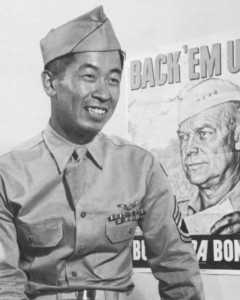 Ben Kuroki was born in Hershey, Nebraska, the son of a farmer. Kuroki was one of the few Nisei admitted to the Army Air Corps. He earned two Distinguished Flying Crosses and was acclaimed as the first Nisei war hero after flying 30 missions in Europe as a tailgunner and top turret gunner aboard a B-24 named “The Red Ass.” The government sent him on a tour to Heart Mountain and two other camps in an effort to promote recruitment and help curb the growing draft resistance. He was later subpoenaed as a witness in the conspiracy trial of the Fair Play Committee leaders. Kuroki asked for duty in the Pacific and after being initially refused, became the only Nisei to serve in active combat with the Air Corps in the Pacific Theater, flying 28 more missions over Japan. After the war he spoke to audiences nationwide and was the subject of a 1946 biography, BOY FROM NEBRASKA.” He went into journalism, becoming the first Japanese American editor of a general newspaper in Nebraska. He later edited newspapers in suburban Michigan and Southern California. He retired with his wife Shige to Southern California.
Ben Kuroki was born in Hershey, Nebraska, the son of a farmer. Kuroki was one of the few Nisei admitted to the Army Air Corps. He earned two Distinguished Flying Crosses and was acclaimed as the first Nisei war hero after flying 30 missions in Europe as a tailgunner and top turret gunner aboard a B-24 named “The Red Ass.” The government sent him on a tour to Heart Mountain and two other camps in an effort to promote recruitment and help curb the growing draft resistance. He was later subpoenaed as a witness in the conspiracy trial of the Fair Play Committee leaders. Kuroki asked for duty in the Pacific and after being initially refused, became the only Nisei to serve in active combat with the Air Corps in the Pacific Theater, flying 28 more missions over Japan. After the war he spoke to audiences nationwide and was the subject of a 1946 biography, BOY FROM NEBRASKA.” He went into journalism, becoming the first Japanese American editor of a general newspaper in Nebraska. He later edited newspapers in suburban Michigan and Southern California. He retired with his wife Shige to Southern California.
Staff Sergeant Michael Lipari
Staff Sergeant Michael Lipari joined the Army in 1989- 2007, serving in Bosnia, Kosovo and multiple deployments in Iraq. He served in the fight for Sadar city and in both major operations in Fallujah. including Operation Phantom Fury, which was the bloodiest fight in Iraq history. Awards and decorations include the Combat Action Badge and Bronze Star medal and Purple Heart. He is currently working for the Department of Defense and just finished writing a book titled The Long Journey Home From Iraq. (a Soldier’s Long Road to Recovery from TBI and PTSD.)
Colonel Susan Luz
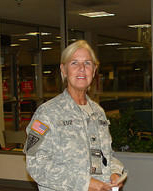 Colonel Susan Luz, 57, is the highest ranking soldier in the 399th Combat Support Hospital, an Army Reserve unit based out of Massachusetts. In 2007 she won the Bronze Star for meritorious service while in Iraq. Trained as a nurse, she has lived a life devoted to public service and has worked in inner-city schools, jails, and adolescent psychiatric wards. A former Peace Corps volunteer to Brazil, she holds a nursing degree from the University of Rhode Island and a master’s degree in public health from Boston University. No stranger to military circles, Susan’s father is a World War II veteran who served under General Patton. Susan’s father-in-law is the late George Luz Sr., who was portrayed by actor Rick Gomez in the Band of Brothers HBO miniseries based on Stephen Ambrose’s bestselling book by the same name. Susan lives with her husband, George Luz Jr., in Rhode Island.
Colonel Susan Luz, 57, is the highest ranking soldier in the 399th Combat Support Hospital, an Army Reserve unit based out of Massachusetts. In 2007 she won the Bronze Star for meritorious service while in Iraq. Trained as a nurse, she has lived a life devoted to public service and has worked in inner-city schools, jails, and adolescent psychiatric wards. A former Peace Corps volunteer to Brazil, she holds a nursing degree from the University of Rhode Island and a master’s degree in public health from Boston University. No stranger to military circles, Susan’s father is a World War II veteran who served under General Patton. Susan’s father-in-law is the late George Luz Sr., who was portrayed by actor Rick Gomez in the Band of Brothers HBO miniseries based on Stephen Ambrose’s bestselling book by the same name. Susan lives with her husband, George Luz Jr., in Rhode Island.
Donald G. Malarkey
Donald G. Malarkey joined Easy Company, 506th Parachute Infantry Regiment, 101st Airborne Division (“The Band of Brothersâ€) in August 1942. He fought in the D-Day invasion, Operation Market Garden, the Battle of the Bulge and eventually into southern Austria. Malarkey served more days in combat without a wound than any other man in Easy Company. He earned the Bronze Star for his actions on D-Day. He retired from the military a Technical Sergeant.
Donald G. Malarkey
Sergeant First Class Ed Malone is a 14 year veteran of the Army with a deployment to Kosovo and two deployments to Iraq under his belt. He wears a Purple Heart and a Bronze Star among other medals. In Iraq he used his tactical prowess and aggression to keep his platoon and some Iraqi Security Forces members alive despite his own injuries. The 3rd Platoon, Grim Troop, 2nd Squadron, 3rd Armored Cavalry Regiment, was conducting a joint combat patrol with the Iraqi Army in the extremely hostile Surai district of Tal’Afar, Iraq, when Malone’s dismounted patrol came under withering enemy machine gun fire, RPG fire and hand grenades. During the firefight and without regard for his own safety, Malone repeatedly exposed himself to enemy fire. Malone is currently the senior military instructor at Bowie State University in Maryland.
Marco Martinez
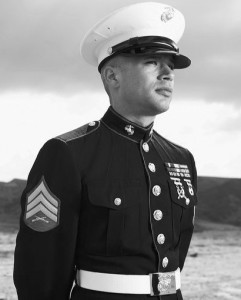 Sergeant Marco Martinez, USMC, once a gang member, became the first Hispanic American in the War on Terror to receive the Navy Cross, the second-highest award a U.S. Marine can receive, second only to the Medal of Honor. His combat heroics have been described in the pages of the San Diego Union-Tribune, USA Today, National Review, and the Navy Times, among other publications. Only 26 years old, Martinez now attends college in Southern California while working full-time in nuclear security.
Sergeant Marco Martinez, USMC, once a gang member, became the first Hispanic American in the War on Terror to receive the Navy Cross, the second-highest award a U.S. Marine can receive, second only to the Medal of Honor. His combat heroics have been described in the pages of the San Diego Union-Tribune, USA Today, National Review, and the Navy Times, among other publications. Only 26 years old, Martinez now attends college in Southern California while working full-time in nuclear security.
Donald Mates
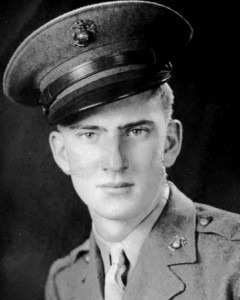 Donald Mates served in the 3rd Marine Division and fought in the Battle of Iwo Jima, landing on February 24, 1945. After midnight on February 27, Mates’ eight-man patrol came under heavy assault from Japanese forces. During fierce hand-to-hand combat, Mates watched as his friend and fellow Marine, Jimmy Trimble, was killed in front of his eyes. Mates was severely wounded and underwent repeated operations for shrapnel removal for over 30 years. In recent years, he has helped the World War II Veterans Committee begin the “James Trimble III Scholarship†in honor of his fallen friend. Mates was also the recipient of the Pentagon’s 2009 Military Hero Award.
Donald Mates served in the 3rd Marine Division and fought in the Battle of Iwo Jima, landing on February 24, 1945. After midnight on February 27, Mates’ eight-man patrol came under heavy assault from Japanese forces. During fierce hand-to-hand combat, Mates watched as his friend and fellow Marine, Jimmy Trimble, was killed in front of his eyes. Mates was severely wounded and underwent repeated operations for shrapnel removal for over 30 years. In recent years, he has helped the World War II Veterans Committee begin the “James Trimble III Scholarship†in honor of his fallen friend. Mates was also the recipient of the Pentagon’s 2009 Military Hero Award.
Col. James B. Morehead
James Bruce Moreland was born August 16, 1916 in Washington, Oklahoma. He attended the University of Oklahoma and UCLA from which he entered the Army Air Corps’ West Company Training Center. Jim and his squadron mates fought in the very first battles of the Pacific, in Java, in the deadly, terrible time period from December 7th, 1941 to mid-1942, which Sir Winston Churchill called “The Hinge of Fate”. On 25 April 1942 he personally led the first decisive USAAF victory over the Japanese forces–11 Japanese aircraft destroyed by 8 P-40s, for the loss of only 1 P-40. Jim personally destroyed 3 Japanese warplanes that mission, to become an ACE, receiving the 1st of 2 DSCs (Distinguished Service Cross).
Orie Felton Morgan
Orie Felton Morgan was born May 24, 1923. On February 20, 1943, Orie volunteered for the Navy. High IQ tests in the Navy boot camp, admitted him into the Hospital Corps School. After graduating, he was assigned to the 2nd Armored Amphibian Battalion, Oceanside, California as a corpsman. 2nd Armored (when securely formed) was sent to the South Pacific in January, 1944. The first battle was Saipan (approx 31 days). Then they went to Tinian Island where Orie was wounded on the 5th day, and received the Purple Heart. The last battle was Iwo Jima, February 19, 1945. He was there 26 days. He received the Bronze Star and was recommended for the Navy Cross. He returned to the States on Thanksgiving Day, 1945. He married his childhood sweetheart, Martha Monta Jackson. They have four daughters, seven grand children and eight great grandchildren.
Ed “Doc’ Pepping
Ed “Doc’ Pepping of Whittier, now 80, was a medic with Easy Company, 2nd Battalion, 506th Parachute Infantry Regiment, 101st Airborne Division a World War II unit made famous in the HBO miniseries “Band of Brothers.’ Then-Pfc. Pepping received the Bronze Star Medal for his valor and courage under fire in Normandy on June 7, 1944. Pepping also received the Army’s Legion of Merit medal and is a holder of the Combat Medic and Combat Infantry Badges. Ed w
Brigadier General Steve Ritchie
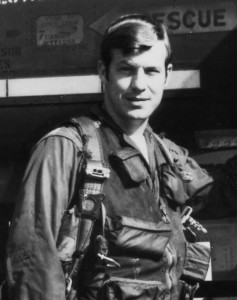 Brigadier General R. Steve Ritchie is the only Air Force “ace†pilot of the air war in Vietnam. A veteran of more than 800 combat hours in the F-4 Phantom during 339 missions over Southeast Asia, Ritchie is the only American pilot to down five MiG-21s, the most sophisticated fighters in the North Vietnamese fleet. By the time he left active duty in 1974, Ritchie had been awarded the Air Force Cross, four Silver Stars, 10 Distinguished Flying Crosses and 25 Air Medals. He would rise to the rank of brigadier general in the Air Force Reserve and served in the Reagan administration.
Brigadier General R. Steve Ritchie is the only Air Force “ace†pilot of the air war in Vietnam. A veteran of more than 800 combat hours in the F-4 Phantom during 339 missions over Southeast Asia, Ritchie is the only American pilot to down five MiG-21s, the most sophisticated fighters in the North Vietnamese fleet. By the time he left active duty in 1974, Ritchie had been awarded the Air Force Cross, four Silver Stars, 10 Distinguished Flying Crosses and 25 Air Medals. He would rise to the rank of brigadier general in the Air Force Reserve and served in the Reagan administration.
Ron Rosser
Ron Rosser was born October 24, 1929 in Columbus Ohio and was the oldest of seventeen children. He enlisted in the Army in 1946 after his brother was killed in the early stages of the Korean War. On January 12, 1952, Rosser was acting as a forward observer with Company L’s lead platoon during an assault on a heavily fortified hill near Ponggilli. When the unit came under heavy fire, Rosser went forward three times and attacked the hostile positions alone, each time returning to friendly lines to gather more ammunition before charging the hill again. Although wounded himself, he helped carry injured soldiers to safety once withdrawal became necessary. For these actions, Rosser was awarded the Medal of Honor. He returned to the United States in May 1952 and was formally presented with the Medal of Honor by President Harry Truman a month later, on June 27, 1952.
Colonel Edward Shames
Colonel Edward Shames was born in Norfolk, Virginia and was in naval school when the United States entered World War II. He volunteered for the paratroops in September 1942 and was assigned to I Company in the 3rd Battalion of the 506th Parachute Infantry, 101st Airborne. Shames then transferred to HQ company and, after receiving a battlefield commission at Carentan, joined Easy Company―now known as the Band of Brothers―as a 2nd Lieutenant after the Normandy invasion in July 1944.
Major General John K. Singlaub
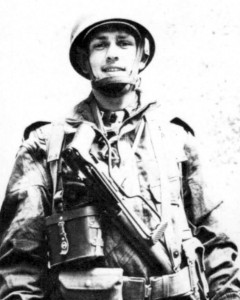 Major General John K. Singlaub parachuted into France as a member of the OSS during WWII. After WWII, he served with the OSS in China. He served as commander of the 2nd Battalion, 15th Infantry Regiment during the Korean War. Singlaub worked in the Pentagon from 1963-65. He served as the commander of the Military Assistance Command, Vietnam, Studies and Observation Group during the Vietnam War until he was transferred to Germany. Singlaub was promoted to Major General in 1972. Among his medals are the Distinguished Service Medal with Oak Leaf Cluster and the Silver Star.
Major General John K. Singlaub parachuted into France as a member of the OSS during WWII. After WWII, he served with the OSS in China. He served as commander of the 2nd Battalion, 15th Infantry Regiment during the Korean War. Singlaub worked in the Pentagon from 1963-65. He served as the commander of the Military Assistance Command, Vietnam, Studies and Observation Group during the Vietnam War until he was transferred to Germany. Singlaub was promoted to Major General in 1972. Among his medals are the Distinguished Service Medal with Oak Leaf Cluster and the Silver Star.
Calvin J. Spann
Calvin J. Spann went into the Army Air Corps to start aviation cadet training in 1943. He was sent to Tuskegee, Alabama for the Cadet training. At the completion of training Lieutenant Spann was sent to Italy as a replacement combat pilot and given an instruction manual to fly the P51 Mustang. He became a member of the 100th Fighter Squadron, a part of the 332nd Fighter Group under the command of Col. Benjamin O. Davis, Jr. Lt. Spann flew 26 combat missions before the end of the war in Europe and terminated his tour of duty in Italy. Spann was separated from active duty here, in 1946. He remained in the Air Force Reserves until 1961 when he was honorably discharged. Lt. Spann’s military awards include the Air Medal with one oak leaf cluster, a Presidential Unit Citation, and the Mediterranean Theatre of Operation ribbon. In addition, he earned the American Theatre and World War II Victory button.
David J. Thatcher
David J. Thatcher was born July 31, 1921. He enlisted on December 3, 1940, and served as flight engineer/gunner on Crew No. 7 of the Doolittle Raiders. Thatcher was the only crew member to avoid serious injury when “The Ruptured Duck†crash-landed just off the China coast, enabling him to help the rest of the crew evade capture. Thatcher later served in England and Africa. He was discharged from active duty in July 1945. Thatcher reached the rank of staff sergeant. His decorations include the Silver Star, Distinguished Flying Cross and Air Medal with 4 Oak Leaf Clusters.
Lt. Col. Kate Van Auken
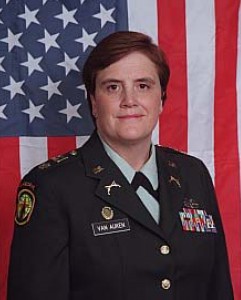 Lieutenant Colonel Kate Van Auken was commissioned in the US Army in 1989. Throughout her 20 plus years she has held a variety of leadership positions including military police platoon leader, detachment commander, and numerous staff assignments: Battalion S-1, S-2, S-4, Brigade S-5 civil-military operations, NATO and other multi-national force level operations. She has served multiple tours in Iraq and Afghanistan and is currently forward deployed as the Current Accounting & Special Projects Officer for the Office of the Secretary of Defense, Defense POW/Missing Personnel Office in the Pentagon, Washington DC, resolving cases for our nation’s missing service-members and civilians isolated during the conflicts in Iraq, Afghanistan and the Gulf War. Her awards and decorations include the Combat Action Badge and three Bronze Star medals, one for valor for actions taken while she and LTC Lauralee Flannery’s convoy was attacked by ten daisy-chained improvised explosive devices, the largest IED attack in Iraq at that time.
Lieutenant Colonel Kate Van Auken was commissioned in the US Army in 1989. Throughout her 20 plus years she has held a variety of leadership positions including military police platoon leader, detachment commander, and numerous staff assignments: Battalion S-1, S-2, S-4, Brigade S-5 civil-military operations, NATO and other multi-national force level operations. She has served multiple tours in Iraq and Afghanistan and is currently forward deployed as the Current Accounting & Special Projects Officer for the Office of the Secretary of Defense, Defense POW/Missing Personnel Office in the Pentagon, Washington DC, resolving cases for our nation’s missing service-members and civilians isolated during the conflicts in Iraq, Afghanistan and the Gulf War. Her awards and decorations include the Combat Action Badge and three Bronze Star medals, one for valor for actions taken while she and LTC Lauralee Flannery’s convoy was attacked by ten daisy-chained improvised explosive devices, the largest IED attack in Iraq at that time.
Shelby Westbrook
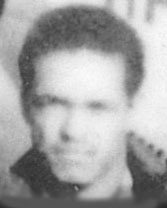 Shelby Westbrook was s a self-sufficient young man with an inner-strength born out of early tragedy. His parents died when Shelby was just 12 years old. He moved from his small town home to live with his brother in Toledo, OH, where he attended an integrated high school, free of the sting of racial prejudice. After Pearl Harbor, he was keen to sign up for the nation’s first all-black air corps. It was only when he entered the U.S. military that Shelby’s eyes are opened to racial injustice. Shelby decided to be the best pilot in the entire war –convinced that his actions will be the most eloquent testament to his right to equal treatment. He became one of the Tuskegee Airmen, a First Lieutenant in the 99th Squadron, 332nd Fighter Group, 15th Air Force.
Shelby Westbrook was s a self-sufficient young man with an inner-strength born out of early tragedy. His parents died when Shelby was just 12 years old. He moved from his small town home to live with his brother in Toledo, OH, where he attended an integrated high school, free of the sting of racial prejudice. After Pearl Harbor, he was keen to sign up for the nation’s first all-black air corps. It was only when he entered the U.S. military that Shelby’s eyes are opened to racial injustice. Shelby decided to be the best pilot in the entire war –convinced that his actions will be the most eloquent testament to his right to equal treatment. He became one of the Tuskegee Airmen, a First Lieutenant in the 99th Squadron, 332nd Fighter Group, 15th Air Force.
James A. White
 James A. White joined the Marine Corps in 1943 and fought in the battle of Iwo Jima as part of the Third Marine Division from February 24th to March 26th, 1945. He joined Donald Mates and Jimmy Trimble in their eight-man patrol on the fateful night of February 27. After Trimble was killed and Mates severely wounded, White ran to Mates’ aid and almost single-handedly beat back the Japanese attack. His experience of hand-to-hand combat on the island was featured in an article by Leatherneck Magazine and he is the subject of a book about the Battle of Iwo Jima. He married in 1950 and has eight children.
James A. White joined the Marine Corps in 1943 and fought in the battle of Iwo Jima as part of the Third Marine Division from February 24th to March 26th, 1945. He joined Donald Mates and Jimmy Trimble in their eight-man patrol on the fateful night of February 27. After Trimble was killed and Mates severely wounded, White ran to Mates’ aid and almost single-handedly beat back the Japanese attack. His experience of hand-to-hand combat on the island was featured in an article by Leatherneck Magazine and he is the subject of a book about the Battle of Iwo Jima. He married in 1950 and has eight children.
Colonel Warren Wiedhahn
RDML Patricia Wolfe
RDML Patricia Wolfe was born and raised in northern New Jersey. Wolfe’s active duty tours include sales and disbursing officer in USS Piedmont (AD 17), supply officer, Navy’s Cover and Deception Group II and officer in charge (OIC) of resale activities at the Navy Supply Corps School in Athens, Ga. She immediately affiliated with the Navy Reserve following her release from active duty in 1987. Wolfe has been recalled to active duty numerous times in support of Operations Desert Storm, Sea Signal , Restore Democracy, and twice for Operation Enduring Freedom where she first served at the U.S. Central Commands Strategic Movement Center and most recently as the deputy commander CTF 56 and commander, Navy Expeditionary Logistics Support Group Forward at Camp Arifjan, Kuwait. Wolfe’s personal decorations include the Defense Meritorious Service Medal, Navy Meritorious Service Medal, Joint Commendation Medal, Navy Commendation Medal with Gold Star, Joint Achievement and Navy Achievement Medals.
Jeremiah Workman
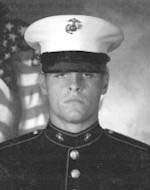 Sergeant Jeremiah Workman was born on August 26, 1983 in Marion, OH. He enlisted in the Marine Corps in 2000, and in 2004, was assigned to the 3rd Battalion, 5th Marines where he served in Weapons Company as a team leader and later squad leader. In September 2004, he deployed to Iraq and participated in Operation Phantom Fury―the second Battle of Fallujah. His actions in leading the rescue of Marines trapped in a house by enemy fire led to his being awarded the Navy Cross―second only to the Medal of Honor. He would go on to become a Drill Instructor and is currently assigned to Training and Education Center Company, Headquarters and Service Battalion, MCB, Quantico, VA.
Sergeant Jeremiah Workman was born on August 26, 1983 in Marion, OH. He enlisted in the Marine Corps in 2000, and in 2004, was assigned to the 3rd Battalion, 5th Marines where he served in Weapons Company as a team leader and later squad leader. In September 2004, he deployed to Iraq and participated in Operation Phantom Fury―the second Battle of Fallujah. His actions in leading the rescue of Marines trapped in a house by enemy fire led to his being awarded the Navy Cross―second only to the Medal of Honor. He would go on to become a Drill Instructor and is currently assigned to Training and Education Center Company, Headquarters and Service Battalion, MCB, Quantico, VA.










